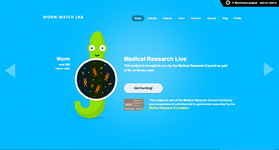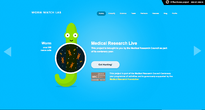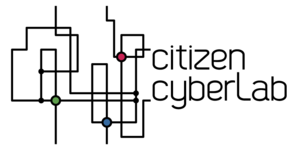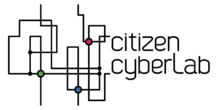Worm Watch Lab: Difference between revisions
Jump to navigation
Jump to search
(Created page with "{{Citizen science project |field_project_name=Worm Watch Lab |field_project_access_URL=http://www.wormwatchlab.org/ |field_screenshot=Screen Shot 2013-11-15 at 11.51.05.png |f...") |
No edit summary |
||
| Line 10: | Line 10: | ||
|field_fields_of_science=biology, genetics, medicine, neuroscience | |field_fields_of_science=biology, genetics, medicine, neuroscience | ||
|field_project_description=We need the public’s help in observing the behaviour of tiny nematode worms. When you classify on wormwatchlab.org you’re shown a video of a worm wriggling around. The aim of the game is to watch and wait for the worm to lay eggs, and to hit the ‘z’ key when they do. | |field_project_description=We need the public’s help in observing the behaviour of tiny nematode worms. When you classify on wormwatchlab.org you’re shown a video of a worm wriggling around. The aim of the game is to watch and wait for the worm to lay eggs, and to hit the ‘z’ key when they do. | ||
|field_purpose_of_project=By watching these worms lay eggs, you’re helping to collect valuable data about genetics that will assist medical research by helping us understand how the brain works and how genes affect behaviour. | |field_purpose_of_project=By watching these worms lay eggs, you’re helping to collect valuable data about genetics that will assist medical research by helping us understand how the brain works and how genes affect behaviour. | ||
|field_research_questions=The idea is that if a gene is involved in a visible behaviour, then mutations that break that gene might lead to detectable behavioural changes. The type of change gives us a hint about what the affected gene might be doing. Although it is small and has far fewer cells than we do, C. elegans has almost as many genes and because we share a common ancestor even with worms, many of them are closely related to human genes. This presents us with the opportunity to study the function of genes that are important for human brain function in an animal that is easier to handle, great for microscopy and genetics, and has a generation time of only a few days. | |field_research_questions=The idea is that if a gene is involved in a visible behaviour, then mutations that break that gene might lead to detectable behavioural changes. The type of change gives us a hint about what the affected gene might be doing. Although it is small and has far fewer cells than we do, C. elegans has almost as many genes and because we share a common ancestor even with worms, many of them are closely related to human genes. This presents us with the opportunity to study the function of genes that are important for human brain function in an animal that is easier to handle, great for microscopy and genetics, and has a generation time of only a few days. | ||
|field_location_of_activities=MRC Laboratory of Molecular Biology, Cambridge | |field_location_of_activities=MRC Laboratory of Molecular Biology, Cambridge, UK | ||
|field_main_institution=MRC Laboratory of Molecular Biology, Cambridge | |field_main_institution=MRC Laboratory of Molecular Biology, Cambridge | ||
|field_partner_institutions=Medical Research Council (MRC) as part of the Medical Research Council Centenary year programme, Medical Research Foundation | |field_partner_institutions=Medical Research Council (MRC) as part of the Medical Research Council Centenary year programme, Medical Research Foundation | ||
|field_team_link=http://www.wormwatchlab.org/#/team | |field_team_link=http://www.wormwatchlab.org/#/team | ||
|field_contact_person_URLs=team@zooniverse.org | |field_contact_person_URLs=team@zooniverse.org | ||
|field_team_location=MRC Laboratory of Molecular Biology | |field_team_location=MRC Laboratory of Molecular Biology, Cambridge, UK | ||
|field_participant_task_description=When you classify on wormwatchlab.org you’re shown a video of a worm wriggling around. The aim of the game is to watch and wait for the worm to lay eggs, and to hit the ‘z’ key when they do. | |field_participant_task_description=When you classify on wormwatchlab.org you’re shown a video of a worm wriggling around. The aim of the game is to watch and wait for the worm to lay eggs, and to hit the ‘z’ key when they do. | ||
|field_volonteer_computing=no | |field_volonteer_computing=no | ||
Latest revision as of 15:22, 15 November 2013
| BIBLIOGRAPHY |



